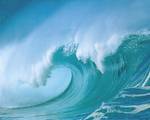
YELLOWKNIFE - Not long ago, John Robins quietly snapped up what could well be called one of Canada's hottest properties, even though it's so near the top of earth it's almost always frozen.
It's an uninhabited, 130-hectare island that he has all to himself, complete with thick-shouldered cliffs that look out on wild polar bears and some of earth's most pristine ocean waters.
And it only cost him $57, a modest price for a place that's been written up in many of the world's major papers: Hans Island.
''I'm thinking of starting a little tourist resort. You could be my first visitor,'' joked the Arctic prospector, speaking from his Vancouver office with Hunter Exploration Group.
''We're going to get some killer T-shirts made up, too: 'Hands off Hans Island','' he said, laughing.
Of course, Robins doesn't exactly own the island, a speck of barren land midway between Canada and Greenland that's just 1,000 kilometres from the North Pole and unremarkable save for one fact: both Denmark and Canada claim it as their own.
But on Feb. 1, Robins inked his own claim when Indian and Northern Affairs Canada awarded him a prospector's permit for the entire island. That gives him the exclusive right for five years to explore for treasure beneath its dark and windswept shores.
''Who knows, maybe there's a huge diamond mine lurking there,'' he said.
That may be a long shot but Robins, who obtained the permit through a paper application and has never been to Hans Island, is a serious prospector. In the past five years, his company has taken out permits on some 10 million hectares of Arctic land, including one plot that's now a prospective diamond mine.
He tacked on the Hans Island application to make both mischief and a statement.
''We weren't doing it completely on a lark. Part of it is the fact that it's a highly-contentious piece of ground, it was open and available for acquisition, so we did it,'' he said.
''But I feel that in the past our government has not done nearly enough to assert its sovereignty in the North. As Canadians, we tend too often to acquiesce to other countries' demands, and if you say something's yours then you better act like it's yours.''
Denmark, however, begs to differ.
''Our position on the sovereignty over the island is not changing,'' said Peter Taksoe-Jensen, the head of the legal service in the Danish Ministry of Foreign Affairs, adding Robins's permit ''was no surprise for us,'' since Canada and Denmark have agreed to notify each other over anything related to the island.
''This is an issue that has proven that the new procedure E is working,'' he said.
The dispute over Hans Island took hold in 1973, when Canada and Denmark failed to agree on who owned the island when they sat down to draw their international border. Instead they left Hans Island as a no-man's land, with the border line running up to the island's southern coast, disappearing, and then reappearing just off its northern coast.
Denmark, however, soon began securing its claim, ordering government representatives to plant the Danish flag. Canada responded last year, sending first a contingent of soldiers to erect a Canadian flag and stone inukshuk, then Bill Graham, the then-foreign minister. The dispute came to a head last September, when the two countries publicly agreed to resolve the issue.
I personally think that this article shows just how important defining things such as the oceans boundarys are. By having this to be more clearly defined I believe that it will only result in less confusion and more peace in general.














